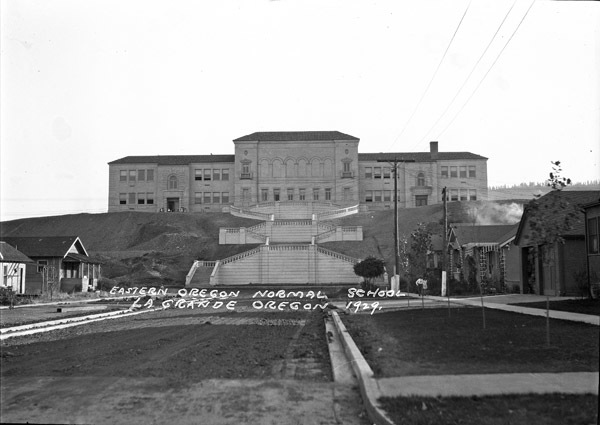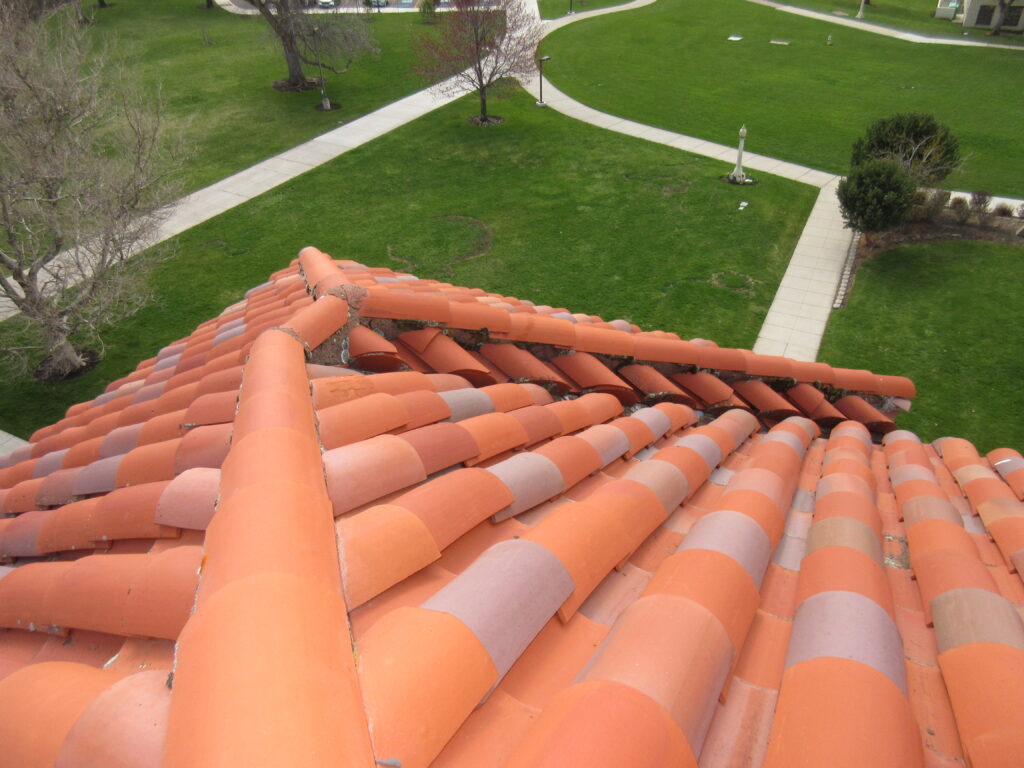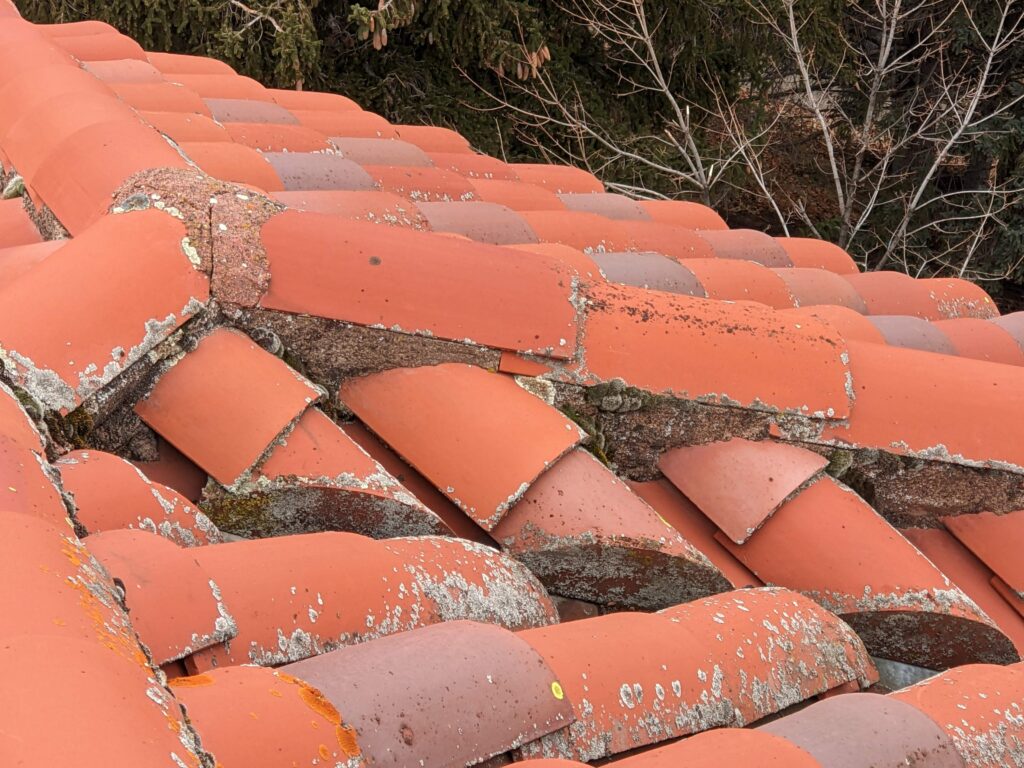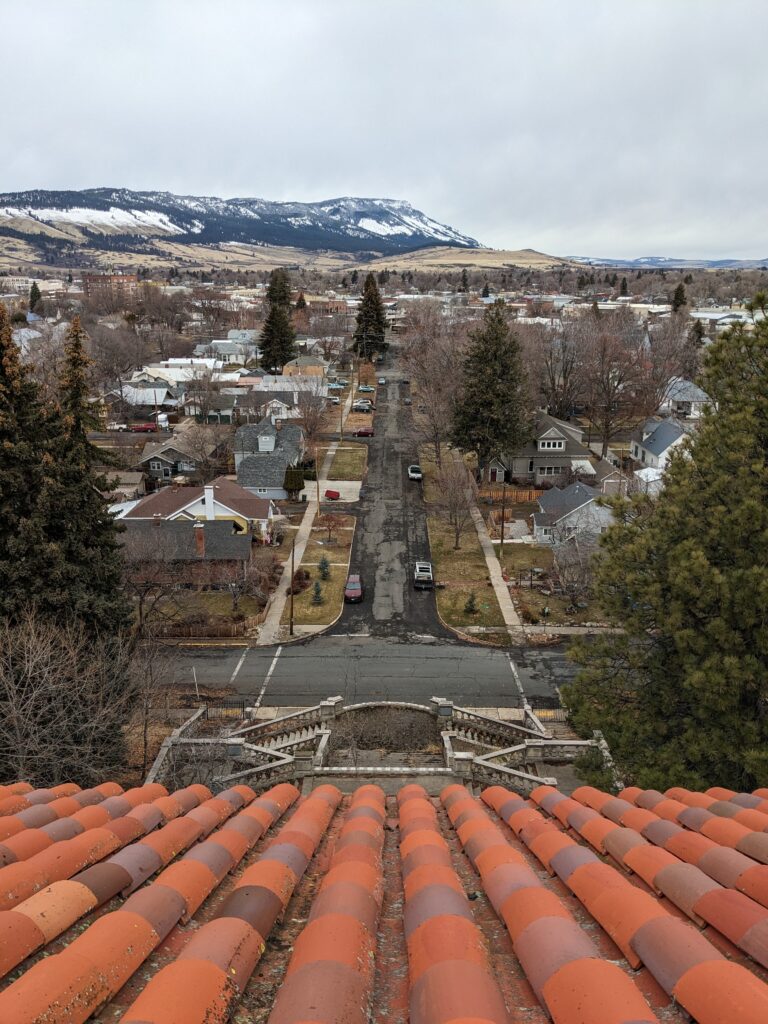Designed by John V. Bennes of Bennes and Herzog, Portland, the historic Inlow Hall on the campus of Eastern Oregon University was completed in 1929. The building first opened as the Administration Building for the State Normal School, changing to the Eastern Oregon College of Education in 1939, and eventually becoming Eastern Oregon University in 1997. Inlow Hall was listed on the National Register of Historic Places in 1980.

North elevation of Inlow Hall, 1929, Eastern Oregon University Library Digital Archives
A modern adaptation to Italian Renaissance palatial architecture, Inlow Hall follows the design concept of a renaissance palace on a hill. The building is constructed of reinforced concrete and finished in stucco, featuring cast stone details, granite entrance steps, and a terracotta roof.

South elevation of Inlow Hall, 1930, Eastern Oregon University Library Digital Archives
Currently, PMA is part of a team completing a rehabilitation project on Inlow Hall. Part of the project includes updating the terracotta roof tiling, which at present has exceeded its useful life. PMA keeps sustainability in mind at the office and on projects. As part of aligning PMA’s sustainability efforts with the work we produce, PMA is working to minimize waste on this project by saving the terracotta tiles that can be salvaged for future use. Our goal is for these tiles to be sent to a regional company that specializes in salvaging building materials for companies or private individuals to use on their future projects.



Photo of current Inlow Hall terracotta conditions by PMA, April 2022
Our office holds a third-party sustainability certification from the City of Portland’s Sustainability at Work division. We received the highest level of certification, Gold Certified Green Business. As part of our promise to sustainability, PMA is passionate about enhancing properties that already exist, ranging from historic to existing built infrastructure. We focus on projects that re-use, rehabilitate, recycle, and advocate for historic preservation. By working with existing materials and finding ways to reuse or recycle them, this saves resources from going straight to the landfill and reduces the loss of embodied energy. Embodied energy is the sum of all the energy required to produce a product, considered as if that energy was incorporated in the product itself. The embodied energy concept can be useful in determining the effectiveness of energy-producing or energy saving materials, and whether or not a product contributes to global warming.
Here are 10 steps to reducing embodied energy:
1. Reuse buildings instead of constructing new ones.
2. Specify low-carbon concrete mixes.
3. Limit carbon-intensive materials.
4. Choose lower carbon alternatives.
5. Choose carbon sequestering materials.
6. Reuse materials.
7. Use high-recycled content materials.
8. Maximize structure efficiency.
9. Use fewer finish materials.
10. Minimize waste.
More on these steps and how to reduce embodied energy can be found here
Blog post written by Jessica Schmitt, PMA Preservation Planner.
